Who doesn’t love a little bit of terror on a hot summer night? And who doesn’t get that tingle of excitement mixed with terror in the dark and hearing/seeing things that go bump in the night? If you answered “yes”, then LIGHTS OUT is the film for you. Destined to become the horror hit of the summer, LIGHTS OUT is directed by David F. Sandberg from script by Sandberg and Eric Heisserer based on a short film by Sandberg. It transcends the genre thanks to ingenuity, technical polish and hair-raising terror.
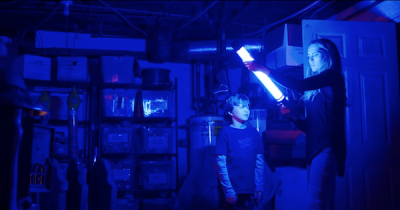
This is the story of Sophie and Diana. Sophie, now widowed, is mother by her first husband to 20-something Rebecca, and Martin. Rebecca long ago left home and has been on her own since 16 or 17, with her only family tie being Gabriel. She and Sophie are just this side of complete estrangement thanks to Sophie’s ongoing mental illness and her refusal to take meds.

Blaming the leaving of her first husband and then the death of her second husband Paul for her illness, as Rebecca starts to discover – and as it appears Paul was investigating at the time of his death – Sophie’s illness goes back to her childhood and her time in a mental institution where she made a friend named Diana. Ironically, Sophie is not sleeping and Martin hears her talking all night long in her bedroom. On questioning his mother about who she’s talking to, her answer is always the same, “my friend, Diana.” But it’s not just talking that’s apparently happening.
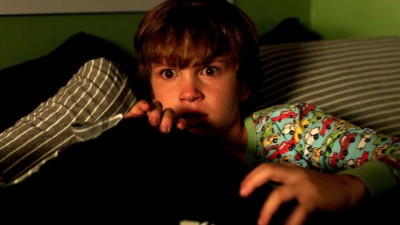
Thanks to his mother’s behavior, Martin is also not sleeping at night but rather, during the day in class, prompting a call to Rebecca when Sophie can’t be found. Rebecca has her own issues going on with boyfriend Bret; a man who clearly loves her and wants to make a commitment, something Rebecca shies away from allegedly due to her father’s leaving when she was young. But she won’t turn her back on Martin. Caring about her, Bret gets involved in the family drama as the two take Martin to Rebecca’s apartment where fear starts to take hold of Rebecca as Martin tells tales of Diana.
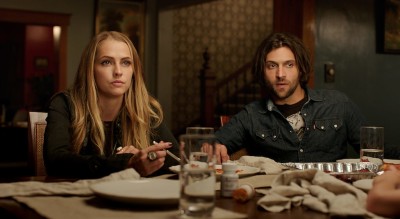
Forcing a showdown between Rebecca and Sophie over Martin, truths start to reveal themselves with everything revolving around Diana. Is she real? Is she alive? Is she a figment of imagination? And just why are the lights always out?

Lighting design and use of light, i.e., black light/candle/flashlight/GE bulbs/ all being used concurrently but judiciously, is some of the best lighting design ever in a horror film. Simply outstanding. Scribe Heisserer and director Sandberg have constructed a solid meld of story and visuals with visual reveals interwoven within the script (i.e., the black light). Cinematographer Marc Spicer nails the lensing with effective and intriguing framing and lens focal length, using light and shadow to paint a lush tapestry that is revelatory with lensing of faces and nuanced movements.
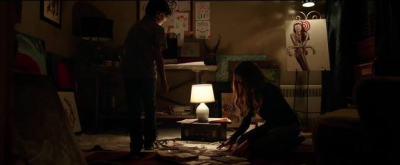
Sandberg immediately sets the stage and the tone of the film with Billy Burke as Paul in hiss company warehouse. Stunningly designed and paced. But, it also introduces us to the malevolence at play. To do so at such an early stage goes against the grain for most horror films, but with horror icon James Wan as a producer, it’s not surprising to see the boldness of storytelling here. And you’ve got two of the best horror editors on hand here with Kirk Morri and Michel Aller and their skills show in spades.

Maria Bello delivers one of the best performances of her lauded career with her interpretation of Sophie. Tortured from within, Sophie’s mania is palpable. As Sophie, Bello is hypnotic in her performance and Spicer’s camera captures every tic, every bead of sweat, every wringing of the hands, every cower. Brilliant and frightening. Teresa Palmer is solid as Rebecca (but her eyeliner and false eyelashes need to go) and has a warm chemistry with Gabriel Bateman. But I have to say, it’s the boys who are the touchstones for the audience. As Martin, Gabriel Bateman is a rock. Pragmatic, yet fearful, he makes the family dynamic real while grounding the audience with the idea that it’s okay to be afraid but then be able to face and conquer the fear. And talk about standout stunt work! Bateman is dynamite doing some of his own hairy stunts, like getting pulled under the bed. Nicely done by Bateman and stunt coordinator Mark Norby. Joining Bateman is Alexander DiPersia as Bret. While the boys are the cornerstones of love and connection, in Bret, DiPersia also gives the audience the real POV of an outsider with doubts and fears, ultimately seeing the truth of Diana.
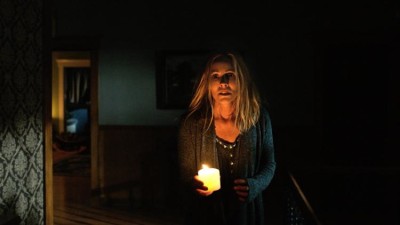
Kudos to the team in electing to go with as many practical stunts and horror effects as possible, and in their casting Alicia Bailey as Diana. On viewing, it’s obvious that Bailey’s physicality and “bendability” added much to the presentation of Diana. Prosthetics – especially the hands and talon-spiked fingernails – are superbly rendered and thanks to Spicer’s lighting and lensing, heighten the fear within the shadows.
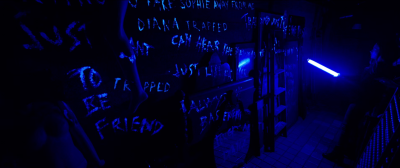
Interestingly with LIGHTS OUT is that while I am one to typically not jump or shriek with horror films and suspense-filled terror, it was the anticipation of the darkness and what lie behind the light, what was seen only in the shadows, that had the hairs on my arms standing up repeatedly throughout the film. The unseen anticipation was electrifying.
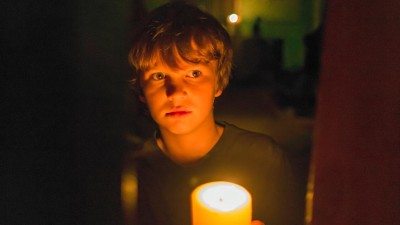
Sound design is also beautifully rendered, notably with Diana’s fingernails so that even scratching on wood had that nails on chalkboard tonal quality sending chills up and down one’s spine.
Smartly written, smartly designed and terrifying to a tee, Sandberg knocks it out of the park with LIGHTS OUT.
Directed by David F. Sandberg
Written by Eric Heisserer and David F. Sandberg (based on the short film by)
Cast: Maria Bello, Teresa Palmer, Gabriel Bateman, Billy Burke, Alexander DiPersia












